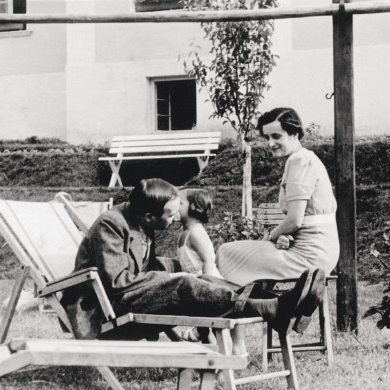
News

‘Everyone is Present’ sees history anew
MATTHEW KROUSE
It covers her grandparents’ crazy journey to Cape Town via Istanbul, Baghdad, and Bombay; their complicated personal relationships, her discovery of her grandfather’s exquisite handmade journals, and her own journey backwards to Poland.
Everyone is Present is a landmark publication in the sense that it takes a distinctly 21st century view of a story that bears vague resemblance to others told in the Jewish world.
Many families have these sagas of flight and arrival. But we tend to conflate facts, overlooking the minutiae of personal relations in favour of sweeping conclusions that tie up loose ends, allowing us to maintain the social order we’ve constructed in a new land.
Not so with Kurgan, who is an accomplished visual and conceptual artist stationed in Johannesburg. Her main body of work examines images, and the way that they throw history back at us. Using mostly vernacular photography, she looks at the way we explain who we are, creatively, in ordinary spaces loaded with personal significance.
The award citation tells us that, “If there is truth in the assertion that catharsis is the road to healing, then the annual Alan Paton longlist reflects a nation imbibing and dispensing some serious mass medicine.”
And, while Kurgan’s memoir, based on looking at family photographs, might not dispense “mass medicine”, its writing has been an act of healing on her part.
At the book launch at Johannesburg’s Holocaust & Genocide Centre late last year, Kurgan said that by viewing her late grandfather’s photographs and by reflecting on his writing, she had attempted “some kind of return, some kind of reparation, some kind of retrieval”.
Through the book, Kurgan tries to reimagine the drama and dynamics of the Kallir family. They were well-to-do, lived in a cosmopolitan Polish setting. They holidayed for months at the famous Zakopane health and holiday resort, with a governess for their children. Here, her devoted grandfather took snapshots of his wife, Tusia, while she had an extra-marital affair.
Isabel Hofmeyr, professor of African Literature at the University of the Witwatersrand, and global distinguished professor at New York University, pointed out that the book poses the question: “How do we inherit the past?” One of the important arguments that the book makes is that the past always comes to us via testimonial objects – the family album, the photograph, the diary, the anecdote, the song. These are small, everyday forms that we think we understand. They appear to be self-evident, and we hardly ever look at them twice.
“What this book does is teach us how to pay attention. It says that if you take these things that you think you know, what you need to do is look at them with this extraordinary potential curiosity.
“It is a book that is asking us to look at these things, and to look at them anew.”
One of the things Kurgan looks at “anew” is the computer application Google Street View which allowed her to examine the exact spot her family inhabited in the town of Bielsko, about 60km from Krakow, where the Nazis attacked Poland in 1939.
The narrative of her family’s flight from Poland takes on nail-biting proportions. But, it is the mechanical simplicity of Google Street View, seen in 2013 when Kurgan was doing her research, that is cause for introspection about the impact of conflict on our daily lives. By tuning into Street View, Kurgan found that the building her family had lived in had not changed substantially in more than 70 years.
Reflecting on the mass migration of refugees in the present day, Kurgan writes about irony and the movement of refugees towards the Europe her family once fled from.
But in the end, it is in evoking her family members’ triumphs and disappointments, through photography, that makes Everyone is Present a triumph of storytelling in a contemporary way.
While her grandfather was “living the wrong life”, according to Kurgan, he tolerated his wife’s infidelity as much as he tolerated change. Perhaps it is in Kurgan’s mother’s fascination with fairytales that we find a sad inability to deal with harsh facts a generation down the line.
Not so Kurgan herself. The book, like its author, comes to the conclusion that there is no one truth to arrive at when we look back at our lives. She uses the photographic medium to make her point.
“Ultimately, in the same way that memory and narrative have very unfixed meanings, so too do photographs,” says Kurgan. “People confuse photographs with truth, with fact. But most photographs are fiction.”




